
Vanilla
Breeze.lsy
Circle-0 : an anti-game by Yes &
Circle-0 is a game that will break and crash. It is a game of beautiful messes and catastrophes. Every interaction you have with the game leads to its inevitable destruction. In a world where games are praised for their tight controls and systemic elegance, Circle-0 outright rebels against stability, comprehensibility, and coherence. And yet, with it’s dizzying array of items and potential interactions, it rewards curiosity with unpredictable and delightful results.
There is nothing in this game that can harm you. Should you jump off the level, a new one will be created just for you. Every item and NPC in the game have a monetary cost associated with it. Money can be gained through one of three means: finding it on the ground, completing fetch quests, or killing NPCs. Most items are usable in the world. Items might shoot mushrooms, light things on fire, explode, summon meteors, or turn static objects into NPCs.
The controls are a modification of the standard keyboard-and-mouse First Person Game.
When in the standard Zoomed In mode, your controls are as follows:
W: Move Forward
A: Strafe Left
S: Move Backward
D: Strafe Right
Mouse Move: Look Around
Mouse Button Left: Buy/Pick up item
Mouse Button Right: Use Equipped Item
G: Drop Equipped Item
Tab: Change to Zoomed Out Mode
Your visor acts as your inventory. Items placed in the visor will persist between levels. When in the Zoomed-Out Visor Mode, your controls are as follows:
Mouse Move: Move Cursor
Mouse Button Left: Pick up/Throw Item
WAS or D: Move character off the observation platform.
At this point, controls are similar to Zoomed-In mode, and you can explore your visor space.
Left click on the Observation Platform to re-enter the Zoomed-Out mode.

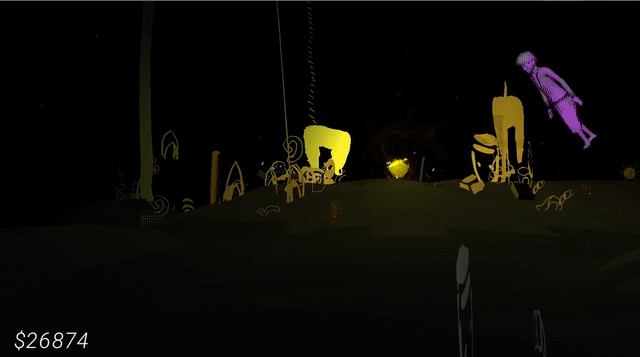 | 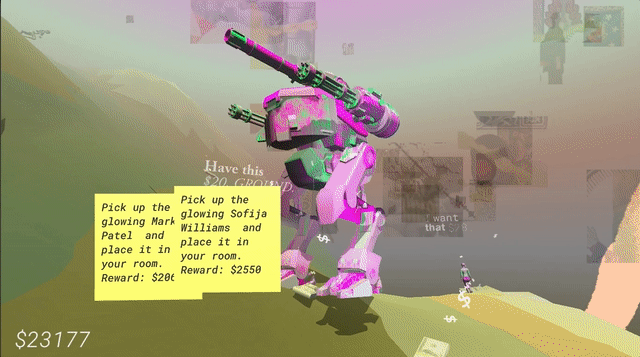 | 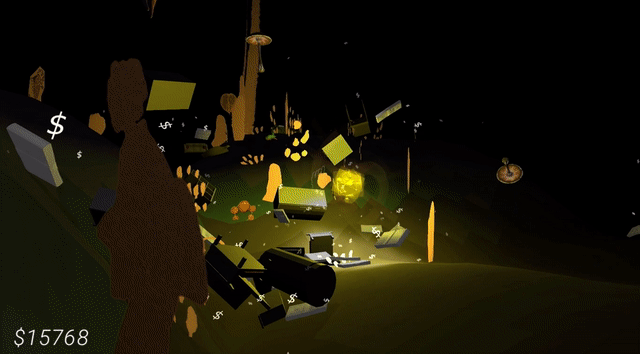 |
|---|---|---|
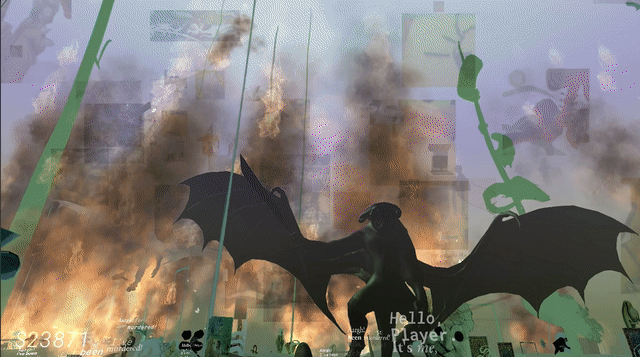 | 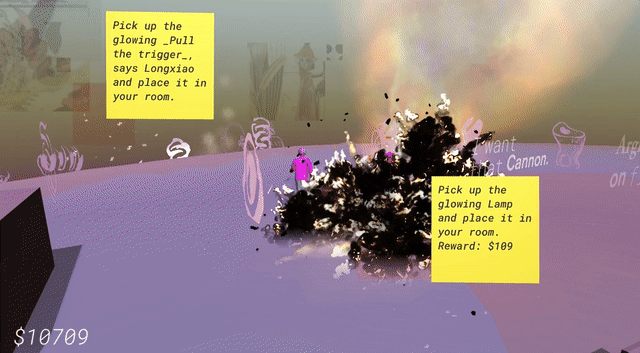 | 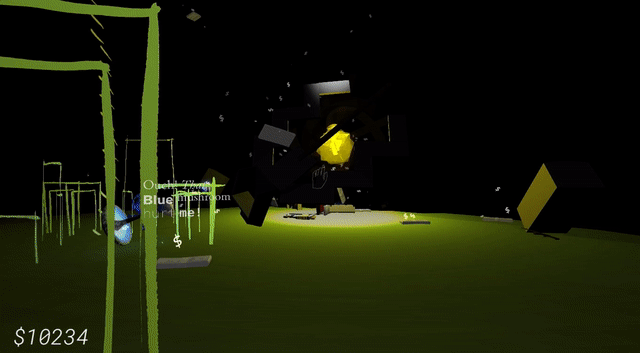 |
 |  |  |
 |
Post Mort: Circle-0
This game was an ambitious project, not just for its sprawling scope, but for the “yes and” ethos of inclusion, mixed fidelity of assets, and general chaos that drove its conception. How do you make a game when its teleological end is to break? How do you coordinate a team where each member is working quasi independently on different systems?
In terms of core interaction and camera, the game became locked in early on without much experimentation. By the time we were encouraged to try a different route, it felt like we were too far along in the process to make a radical shift. The game could have benefitted from a bit more prototyping in this regard : what would it have looked like if it was all in 2D? Or was a Third person isometric view? Or was a VR game?
A “week long vacation prototype” attempted to address the creative challenge from a different direction. This prototype consisted six games played simultaneously in a kind of hyper-collage. While we agreed that the prototype was compelling, some group members believed it was complete, and were not interested in working on it further. After some group discussion, the consensus was to return to the original project, rather than pursue this multi-perspective game, or continue to prototype. In retrospect, we may have benefitted from additional “vacations,” or by working on a prototype that felt complete.
Still, by establishing the core perspective and interaction early on, we were able to add a lot of content and expansion. Procedural level generation became a core feature, and we were able to add dozens of NPCs, items, and quasi-randomized events. An interactive music system was implemented to respond to objects and player movement through the levels. For better or worse, the systems became increasingly complex and incoherence took on a life of its own.
In our process, there was rarely any clear organization or schedule. While this allowed us to be flexible in creating features and content, it also meant that we were often scrambling, and failing, to display games at playtest Thursday events.
But somehow it came together in the last 4 weeks or so, and events became a lot of fun. We learned that the game was a strange and entertaining kind of spectator sport - playthroughs can be radically different. We still need to iron out some bugs and interaction issues, but we managed to make something unique and intriguing.playtest